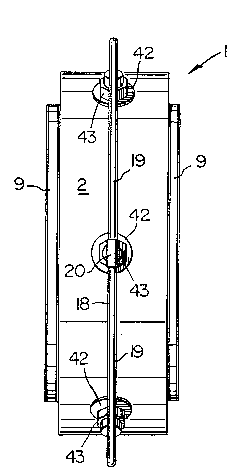Some of the information on this Web page has been provided by external sources. The Government of Canada is not responsible for the accuracy, reliability or currency of the information supplied by external sources. Users wishing to rely upon this information should consult directly with the source of the information. Content provided by external sources is not subject to official languages, privacy and accessibility requirements.
Any discrepancies in the text and image of the Claims and Abstract are due to differing posting times. Text of the Claims and Abstract are posted:
| (12) Patent: | (11) CA 2015638 |
|---|---|
| (54) English Title: | CATALYTIC HEATER |
| (54) French Title: | APPAREIL DE CHAUFFAGE CATALYTIQUE |
| Status: | Term Expired - Post Grant Beyond Limit |
| (51) International Patent Classification (IPC): |
|
|---|---|
| (72) Inventors : |
|
| (73) Owners : |
|
| (71) Applicants : |
|
| (74) Agent: | GOWLING WLG (CANADA) LLP |
| (74) Associate agent: | |
| (45) Issued: | 1995-11-14 |
| (22) Filed Date: | 1990-04-27 |
| (41) Open to Public Inspection: | 1991-10-27 |
| Examination requested: | 1993-03-22 |
| Availability of licence: | N/A |
| Dedicated to the Public: | N/A |
| (25) Language of filing: | English |
| Patent Cooperation Treaty (PCT): | No |
|---|
| (30) Application Priority Data: | None |
|---|
In general, catalytic heaters which rely on ambient
air for operation are self limiting. A simple, effective
solution to the problem includes a casing with an open front
end, a screen on such front end, a catalyst pad in the casing
behind the screen, and diffuser pads for receiving a gas/air
fuel mixture from a mixer which creates the mixture and
introduces the mixture through the rear wall of the casing.
Channels or dikes in the diffuser pads ensure even
distribution of the gas/air fuel mixture to the catalyst pad.
Note: Claims are shown in the official language in which they were submitted.
Note: Descriptions are shown in the official language in which they were submitted.

2024-08-01:As part of the Next Generation Patents (NGP) transition, the Canadian Patents Database (CPD) now contains a more detailed Event History, which replicates the Event Log of our new back-office solution.
Please note that "Inactive:" events refers to events no longer in use in our new back-office solution.
For a clearer understanding of the status of the application/patent presented on this page, the site Disclaimer , as well as the definitions for Patent , Event History , Maintenance Fee and Payment History should be consulted.
| Description | Date |
|---|---|
| Inactive: Expired (new Act pat) | 2010-04-27 |
| Inactive: IPC from MCD | 2006-03-11 |
| Letter Sent | 2002-03-05 |
| Inactive: Entity size changed | 2002-02-14 |
| Inactive: Late MF processed | 2002-01-31 |
| Letter Sent | 2001-04-27 |
| Grant by Issuance | 1995-11-14 |
| Request for Examination Requirements Determined Compliant | 1993-03-22 |
| All Requirements for Examination Determined Compliant | 1993-03-22 |
| Application Published (Open to Public Inspection) | 1991-10-27 |
There is no abandonment history.
| Fee Type | Anniversary Year | Due Date | Paid Date |
|---|---|---|---|
| MF (patent, 8th anniv.) - small | 1998-04-27 | 1998-01-27 | |
| MF (patent, 9th anniv.) - small | 1999-04-27 | 1999-01-08 | |
| MF (patent, 10th anniv.) - small | 2000-04-27 | 2000-02-18 | |
| MF (patent, 11th anniv.) - standard | 2001-04-27 | 2001-03-27 | |
| Reversal of deemed expiry | 2001-04-27 | 2001-03-27 | |
| Registration of a document | 2002-01-28 | ||
| MF (patent, 12th anniv.) - standard | 2002-04-29 | 2002-04-23 | |
| MF (patent, 13th anniv.) - standard | 2003-04-28 | 2003-04-25 | |
| MF (patent, 14th anniv.) - standard | 2004-04-27 | 2004-04-22 | |
| MF (patent, 15th anniv.) - standard | 2005-04-27 | 2005-04-14 | |
| MF (patent, 16th anniv.) - standard | 2006-04-27 | 2006-04-24 | |
| MF (patent, 17th anniv.) - standard | 2007-04-27 | 2007-03-19 | |
| MF (patent, 18th anniv.) - standard | 2008-04-28 | 2008-03-06 | |
| MF (patent, 19th anniv.) - standard | 2009-04-27 | 2009-03-27 |
Note: Records showing the ownership history in alphabetical order.
| Current Owners on Record |
|---|
| CCI THERMAL TECHNOLOGIES INC. |
| Past Owners on Record |
|---|
| ALAN KIRBY |